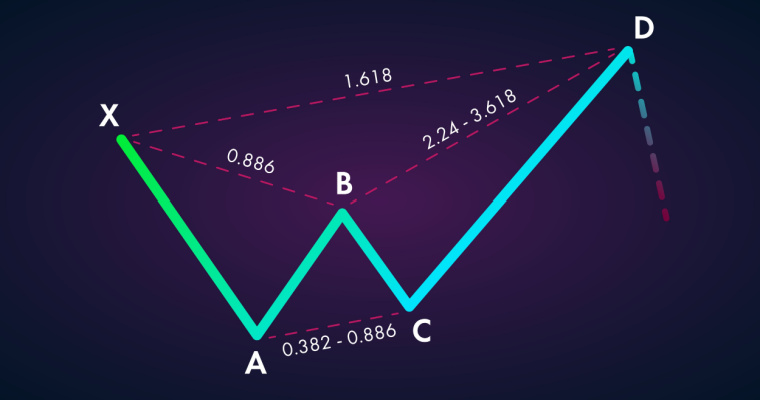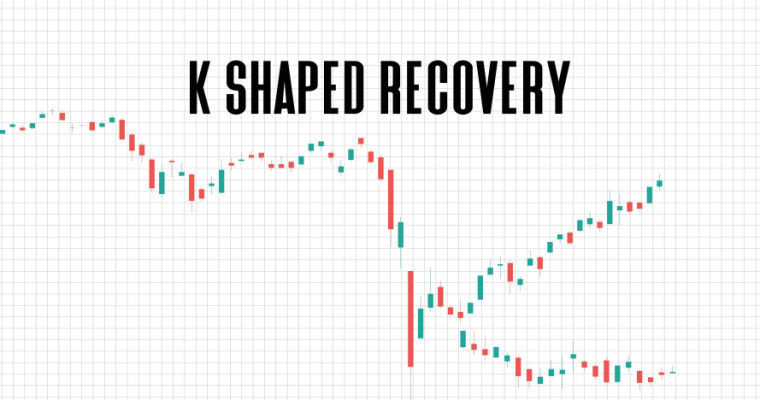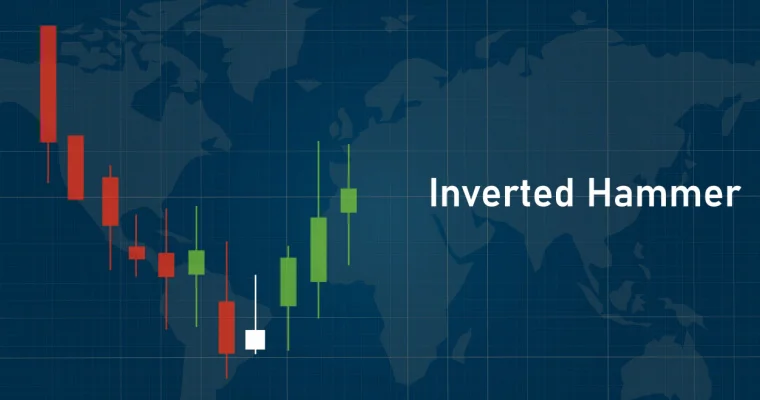What is Iron Condor and What are its Strategies?

Iron Condor is an options trading strategy that involves four options with the same expiration date but different strike prices. Two of the options are puts (i.e., options that grant the holder the right to sell the underlying asset), while the other two are calls (i.e., options that grant the holder the right to buy the underlying asset).
One of the two puts is a long put (i.e., a put purchased by the trader setting up the Iron Condor), while the other is a short put. Similarly, one of the two calls is a long call, while the other is a long call. To know how it works, its strategies and benefits – keep reading!
How Does an Iron Condor Work?
There are two main types of Iron Condors: Short and long. Suppose, a trader wishes to set up a short Iron Condor. In that case, they will have to carry out the following steps:
- Buy a put whose strike price is below the current price of the underlying asset
- Sell a put whose strike price is closer to the current price of the underlying asset
- Sell a call whose strike price is above the current price of the underlying asset
- Buy a call whose strike price is further above the current price of the underlying asset
The “inner” options (i.e., the sold put and call options, in this case) are often referred to as the “body”, while the other two are often referred to as the “wings”.
Iron Condor Example
Here’s a simplified example of an Iron Condor in practice.
Let’s assume that a trader believes that stock X will not see any major movements over the next month. The stock’s current price is Rs.100. The trader decides to set up an Iron Condor in an attempt to profit from their prediction.
The trader starts by buying a put with a strike price of Rs.90. Then, he sells a put with a strike price of Rs.95. Next, he sells a call with a strike price of Rs.105. Finally, he buys a call with a strike price of Rs.110.
Since the strike prices of the two options sold by the trader are closer to the stock’s current price as compared to those of the two options bought, the premium they earn on the sold options exceeds the premium they paid for the bought options.
This difference in premium represents the maximum possible profit this trader can make in this situation.
At the end of a month, when all four options expire, if the price of the stock X is between Rs.95 and Rs.105, then the options will expire worthless, and the trader will make the maximum possible profit. At the end of a month, if the stock ends up with a price higher than Rs.110 or lower than Rs.90, then the trader will incur the maximum possible loss in this situation. For other prices, the trader may or may not make a profit.
It should be noted that the maximum possible loss in this scenario is capped thanks to the “wings” of the Iron Condor (the put at Rs.90 and the call at Rs.110 for this case).
Also Read
What is the Long Iron Condor Options Strategy?
In a ‘long’ Iron Condor, the “inner” options are bought while the “outer” options are sold. A trader who uses this strategy does not expect the price of the underlying stock to be between the strike prices of the “inner” options at the time of expiry.
How Does it Work?
In this strategy, if the price of the underlying stock is between strike prices of the “inner” options at the time of expiry, then the trader will make the maximum possible loss, which is the difference between the premiums paid for the options bought and the premiums received for the options sold.
What is the Short Iron Condor Options Strategy?
The type of Iron Condor described in the above example is a ‘short’ Iron Condor. A trader who uses this strategy does not expect the underlying stock to make any major moves until the expiry date.
How Does it Work?
As discussed above, if the price of the underlying stock is between the strike prices of the “inner” options at the time of expiry, then the trader will make the maximum possible profit, which is the difference between the premiums received for the options sold and the premiums paid for the options bought.
When to Close and When to Manage in Iron Condor Strategy?
There are various philosophies regarding the closure and management of Iron Condors. A common approach is to close such a setup when a certain fraction of the maximum possible profit is achieved, say 50%.
As for managing , there are several ways to adjust them, including extending their time horizon or changing the spreads (i.e., the distance between two calls or two puts) in response to movements in the price of the underlying stock.
Iron Condor Profit and Loss
For a short Iron Condor, the maximum profit is capped at the net premium received in implementing this strategy. The maximum loss is capped at the difference between the strike prices of the two calls or the two puts and the net premium received (ignoring commissions).
For a long Iron Condor, the maximum loss is capped at the net premium paid in implementing this strategy. The maximum profit is the strike prices of the two calls or of the two puts, less the net premium paid (ignoring commissions).
What is a Reverse Iron Condor?
‘Reverse Iron Condor’ is just another name for a long Iron Condor. It is thus set up in the following way:
- Buy an OTM (out-of-the-money) put
- Sell an OTM put with a lower strike
- Buy an OTM call
- Sell an OTM call with a higher strike
Out-of-the-money means that the strike price of the options is such that it will result in a loss if exercised at that time (excluding commissions and other trading fees).
Advantages of the Iron Condor strategy
Some important advantages of Iron Condors are:
- They have a relatively high-profit potential
- They are directionally neutral
- The maximum losses they can produce are capped
- They can be adjusted once entered into
Disadvantages of the Iron Condor strategy
Some key disadvantages of Iron Condors are:
- Trading fees can be higher
- They are complex to understand and set up
- The maximum profits they can produce are capped
- It can be time-consuming to manage them
Long Iron Condor vs Short Iron Condor
The setup for a short Iron Condor is the inverse of that for a long Iron Condor. While a short Iron Condor yields maximum profit when the price of the underlying stock does not move much by the expiry date, the exact opposite is true for a long Iron Condor.
Final Word
The Iron Condor and its variants constitute common but powerful strategies to speculate in the options markets. They have the great advantage of having a capped maximum loss, although the maximum profit they can generate is also capped. It is important for all serious options traders to be familiar with them.
FAQs
Ans: An Iron Condor is an options trading strategy involving four different options: two calls and two puts. Depending on whether the trader believes the underlying stock will make major moves by the expiry date or not, these options will be bought and sold in a particular way so as to yield a profit if the trader’s thesis proves to be correct.
Ans: Given that a commission is charged for every option bought or sold, and given that the Iron Condor strategy involves four options, the commissions involved in such a trade can have a significant downward impact on the profit or loss produced by it.
Ans: Yes. For instance, if the strike prices of both the “inner” options are higher than the price of the underlying asset at the time of setting up the Iron Condor, then this is an indication that the trader is expecting that price to rise by the expiry date.
Ans: An Iron Butterfly (also known as an Ironfly) is also an options trading strategy. While an Iron Condor involves four options at four different strike prices, an Iron Butterfly involves four options at three different strike prices. Moreover, the Iron Butterfly offers a greater risk and reward than an Iron Condor.
Ans: Yes, an important practical advantage of a short Iron Condor is that if the underlying asset’s price is between the strike prices of the “inner” options close to the expiry date, then the trader can simply allow some or all of the options contracts to expire. This can enable the trader to minimise their trading costs.
Want to put your savings into action and kick-start your investment journey 💸 But don’t have time to do research? Invest now with Navi Nifty 50 Index Fund, sit back, and earn from the top 50 companies.
Disclaimer: Mutual Fund investments are subject to market risks, read all scheme-related documents carefully.
This article has been prepared on the basis of internal data, publicly available information and other sources believed to be reliable. The information contained in this article is for general purposes only and not a complete disclosure of every material fact. It should not be construed as investment advice to any party. The article does not warrant the completeness or accuracy of the information and disclaims all liabilities, losses and damages arising out of the use of this information. Readers shall be fully liable/responsible for any decision taken on the basis of this article.

Customer’s Feedback
No comments found.Illiquid Stocks Guide: Definition, Examples, and its Working
Illiquid stocks are part of a long-term investment strategy that is appropriate for investors who a... Read More »What is Shooting Star Candlestick Pattern in Trading?
The shooting star candlestick pattern is considered to be a bearish reversal candlestick ... Read More »What is VWAP Indicator and How to Use it for Trading
The VWAP indicator shows the volume-weighted average market price of a particular stock. You can us... Read More »What is Price Action Trading: Its Strategy, Stop Loss and Profit Targets
Price action trading is a methodology in which the trader solely relies on analysing a security’s... Read More »What is Buy the Dip Strategy in Trading – Working and Example
‘Buy the dip’ is one of the most common phrases in the stock market. It is sort of a go-t... Read More »What is the Black Scholes Model – Formula, Calculation and Assumptions
Among the important concepts in modern financial theory, the Black Scholes model, developed in 1973... Read More »What is Harmonic Pattern and How Does it Help in Trading?
Harmonic patterns are one of the most efficient and effective trading patterns. Although they are m... Read More »What is a Contract Note and Why is it Important?
Contract note is a legal document containing the details of every stockbroker's trade on a stock ex... Read More »What is K-shaped Recovery: Indication, Example and
Economies go through multiple phases in business cycles. One such phase is a recession which is mar... Read More »Guide to Book Building – Its Types, Benefits and Process
Initial public offerings (IPOs) are priced as specified by their underwriters. The process by which... Read More »Support and Resistance in Trading: Working, Strategies, Uses and Example
Support and resistance are two of the most significant and practical concepts in technical analysis... Read More »What is the Inverted Hammer Pattern and How to Identify It?
The inverted hammer is one of the most popular candlestick patterns and is considered essential for... Read More »Top 10 Chit Fund Schemes in India in 2023
Chit funds are one of the most popular return-generating saving schemes in India. It is a financial... Read More »10 Best Gold ETFs in India to Invest in April 2023
Gold ETFs or Gold Exchange Traded Funds are passively managed funds that track the price of physica... Read More »10 Best Demat Accounts in India for Beginners in 2023
Creation of Demat accounts revolutionised the way trades were conducted at the stock exchanges. It... Read More »20 Best Index Funds to Invest in India in April 2023
What is an Index Fund? An index fund is a type of mutual fund or exchange-traded fund (ETF) that... Read More »Best Arbitrage Mutual Funds to Invest in India in April 2023
Arbitrage funds are hybrid mutual fund schemes that aim to make low-risk profits by buying and sell... Read More »10 Best SIP Plans in India to Invest in April 2023
What is SIP? SIP or Systematic Investment Plan is a method of investing a fixed amount in ... Read More »10 Best Corporate Bond Funds in India to Invest in April 2023
Corporate bond funds are debt funds that invest at least 80% of the investment corpus in companies ... Read More »10 Best Bank for Savings Account in India [Highest Interest Rate 2023]
Savings account is a type of financial instrument offered by several banks. It lets you safely depo... Read More »
































